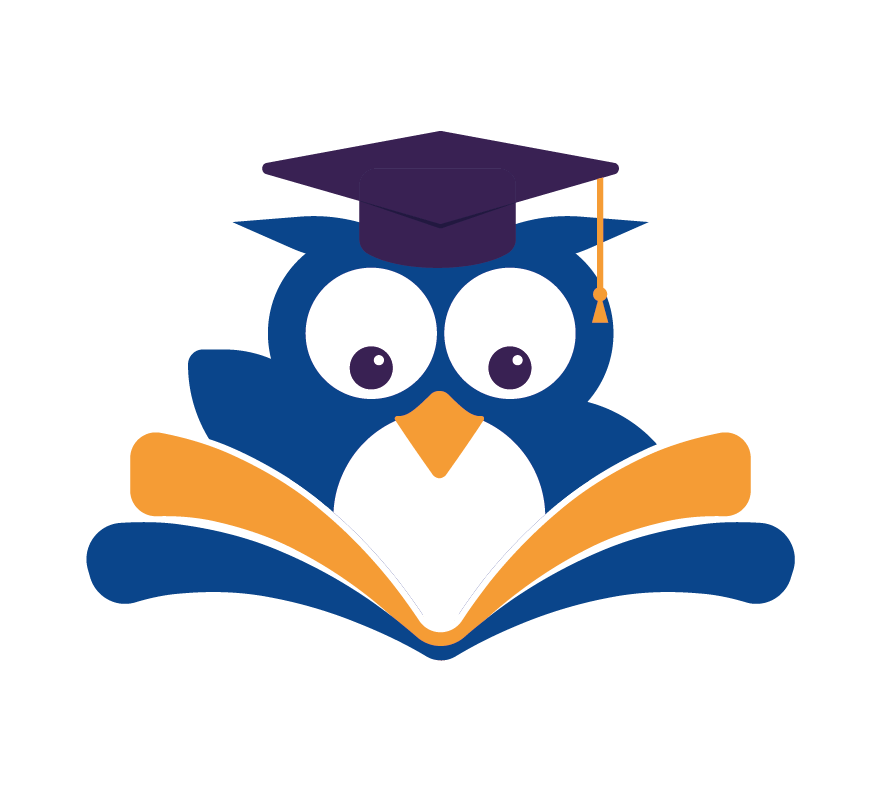Are you tired of studying without seeing the results you want? Effective study methods can make all the difference. Jessie Schwab, a psychologist at Harvard College Writing Program, says we often misjudge our learning. Just knowing information by heart isn’t the same as really understanding it.
We need to improve our study skills by using strategies that match how our brains work. This way, studying can become something we enjoy and find effective. Our goal is to help you master the art of studying.
Key Takeaways
- Understand how your brain processes and retains information.
- Adopt effective study strategies to improve retention.
- Transform studying into an enjoyable learning experience.
- Recognize the difference between memorization and true learning.
- Improve your study skills with the right techniques.
The Science Behind Effective Learning
Understanding how our brains process information is key to effective learning. To enhance learning abilities, we need to delve into the intricacies of brain function and memory retention.
How Your Brain Processes and Retains Information
The process of learning involves several stages. These include acquisition, storage, and retrieval of information. The Learning Cycle is crucial here.
The Learning Cycle: Acquisition, Storage, and Retrieval
Acquisition refers to the initial intake of information. Storage involves retaining this information over time. Retrieval is the ability to access stored information when needed.
Neuroplasticity and Its Impact on Studying
Our brains have the remarkable ability to reorganize and adapt, a concept known as neuroplasticity. This ability allows us to form new connections between brain cells, enhancing our capacity to learn.
The Role of Focus, Attention, and Memory
Focus and attention are critical in filtering out distractions and concentrating on the material being studied. Memory plays a vital role in retaining information for future recall.
Debunking Common Study Myths
Many students believe that re-reading material is an effective study technique. However, research shows that active recall, such as testing oneself, is far more effective.
| Study Technique | Effectiveness |
|---|---|
| Re-reading | Low |
| Active Recall | High |
Creating Your Optimal Study Environment
Creating a distraction-free study space is key for better study habits. You need to focus on both physical and digital aspects of your study area.
Designing a Distraction-Free Study Space
A cluttered and noisy study space can hinder your studying. Start by decluttering your area and removing distractions.
Physical Organization Techniques
Here are some tips for organizing your study space:
- Clear your desk of unnecessary items
- Use a comfortable and ergonomic chair
- Invest in good lighting – we’ll discuss this in more detail later
Digital Environment Management
Managing your digital space is as important as your physical one. Use tools like website blockers or apps to stay focused.
Essential Tools and Resources for Productive Studying
The right tools and resources are crucial for effective studying. Ensure you have a reliable computer, a comfortable keyboard, and any other materials you need.
The Impact of Lighting, Sound, and Temperature
The physical conditions of your study environment greatly affect your focus. Good lighting reduces eye strain, and a comfortable temperature keeps you alert.
By focusing on these factors and creating a distraction-free space, you’ll improve your study routine. This will help you reach your academic goals.
Time Management Strategies for Students
Learning to manage your time well can really help you meet deadlines and reach your goals. It’s not just about studying more. It’s about studying smarter.
Effective Planning and Scheduling Techniques
To manage your time well, you need a plan. Make a study plan with clear goals. This will help you feel ready and give you a path to follow.
Creating Weekly and Monthly Study Plans
Begin with a weekly study plan. List what you need to study each day. Break big tasks into smaller ones and set times for each.
For monthly plans, mark important milestones and deadlines. Schedule regular review times to keep on track.
Prioritizing Tasks Using the Eisenhower Matrix
The Eisenhower Matrix helps you sort tasks by urgency and importance. Tasks are divided into four areas: urgent and important, important but not urgent, urgent but not important, and not urgent or important.
Focus on the urgent and important tasks first. Delegate or drop tasks that are less critical.
| Quadrant | Task Type | Action |
|---|---|---|
| I | Urgent and Important | Do First |
| II | Important but Not Urgent | Schedule |
| III | Urgent but Not Important | Delegate |
| IV | Not Urgent or Important | Eliminate |
The Pomodoro Technique and Other Time-Blocking Methods
The Pomodoro Technique involves focused 25-minute study sessions, followed by a 5-minute break. After four cycles, take a 15-30 minute break. This method keeps you focused and avoids burnout.
Other methods include setting study times, avoiding distractions, and using apps or timers to stay on track.
Balancing Study Time with Breaks and Leisure
It’s key to balance study time with breaks and fun activities. Regular breaks help you recharge and retain information better.
Make time for things you enjoy, like reading, exercising, or spending time with loved ones. A balanced life improves your well-being and grades.
Master the Art of Studying: Proven Techniques
To master studying, you need the right techniques. It’s not just about studying a lot. It’s about using strategies that help you remember and understand better. We’ll look at some top study techniques to help you reach your goals.
Active Recall and Spaced Repetition
Active recall means actively recalling information instead of just reading it. You can use flashcards or self-testing for this. Spaced repetition reviews material at longer intervals to help you remember it for a long time.
Implementing Flashcards and Self-Testing
Flashcards are a simple but effective tool for active recall. You can make them by hand or use apps like Anki. Self-testing means testing yourself without looking at your notes. It helps you remember information better.
Creating Optimal Review Schedules
To use spaced repetition well, you need a review schedule. Start by reviewing material a day after you first see it. Then, increase the time between reviews. For example, review a concept after 1 day, 3 days, 7 days, and so on. This helps you avoid forgetting information.
The Feynman Technique for Deep Understanding
The Feynman Technique means explaining a concept in simple terms. It’s like teaching it to someone else. This helps you understand the material deeply and find any knowledge gaps. It ensures you’re not just memorizing but truly understanding.
Mind Mapping and Visual Learning Strategies
Mind mapping is a visual way to connect ideas. It helps organize information and see how different ideas relate. Use colors, symbols, and images to make your mind maps more engaging.
Visual learning is also powerful. Using diagrams, charts, and infographics can help you understand complex information. These visual aids make abstract concepts clearer, especially for visual learners.

By using these techniques, you can improve your learning and study habits. The key is to try different methods to find what works best for you.
Note-Taking Methods That Enhance Retention
Learning to take notes well can change the game for students. It’s not just about writing down stuff. It’s about making a system that helps you get, keep, and remember the info.
The Cornell Method and Its Benefits
The Cornell Method is a top note-taking system. It divides your paper into two parts. The small side is for keywords, questions, and summaries. The big side is for notes.
This method encourages active engagement with the material. It makes reviewing and recalling info easier.
Digital vs. Handwritten Notes: Pros and Cons
The debate on digital vs. handwritten notes is still going on. Handwritten notes are personal and engaging. They help you remember better because of the physical act of writing.
Digital notes, however, are flexible and easy to organize. Let’s look at both sides:
- Digital notes are easy to search and access on any device.
- Handwritten notes help you grasp complex ideas better.
Best Digital Note-Taking Applications
Top digital note-taking apps include Evernote, OneNote, and Simplenote. They have features like tagging, searching, and syncing. These make managing your notes a breeze.
Effective Handwriting Techniques
If you prefer handwritten notes, using colors can help. For example, write key points in red and highlight important stuff in yellow. Organizing by color makes your notes look good and easy to review.
Transforming Notes into Effective Study Materials
After taking notes, it’s time to make them study materials. You can summarize, create flashcards, or make concept maps. This way, you reinforce your understanding and get better at recalling during exams.
By using these note-taking strategies, you can boost your retention and study experience. Choose digital or handwritten notes based on what works for you. Stick to it.
Developing Healthy Study Habits for Long-Term Success
Good study habits can change a student’s life. They help you learn better and succeed in school. By sticking to a study plan, you prepare for success in the long run.
Creating and Maintaining a Consistent Study Routine
Having a regular study schedule keeps you focused. Find out when and where you study best. Set clear goals for each study session to stay motivated.
The Role of Sleep, Nutrition, and Exercise
Sleep, food, and exercise are key for learning. Sleep is especially important for your brain to process what you learn.
Optimal Sleep Patterns for Memory Consolidation
Studies prove sleep is vital for learning. Try to sleep 7-9 hours a night to solidify your memories.
Brain-Boosting Foods and Exercise Routines
Eating foods like blueberries and nuts can boost your brain. Exercise, like cardio or yoga, also sharpens your focus and memory.
| Healthy Habits | Benefits |
|---|---|
| Adequate Sleep | Memory Consolidation |
| Brain-Boosting Foods | Enhanced Cognitive Function |
| Regular Exercise | Improved Focus and Retention |
Avoiding Procrastination and Building Discipline
To beat procrastination, break tasks into smaller parts. Try the Pomodoro Technique for focused work with breaks. Discipline grows with consistent effort.

Technology and Digital Tools to Enhance Learning Abilities
Today, students can customize their learning with digital tools. Technology is key to success, offering many ways to enhance learning abilities and optimize study routines.
Productivity Apps and Study Platforms
Productivity apps and study platforms lead the educational change. They help students manage time, stay organized, and find study materials.
Task Management and Focus Applications
Apps like Trello and Asana help students organize tasks and track progress. Tools like Freedom and StayFocusd block distractions, keeping students focused.
Subject-Specific Learning Resources
Digital platforms focus on specific subjects, offering interactive lessons and feedback. Khan Academy and Duolingo are great examples, covering math, science, and languages.
Using AI and Digital Assistants for Learning
AI and digital assistants support learning. They adapt to students’ needs, providing personalized help. Google Assistant and Siri help with reminders, note organization, and quick answers.
Managing Digital Distractions
Technology has its downsides, like digital distractions. Tools that monitor screen time and the Pomodoro Technique help stay focused.
Overcoming Common Study Challenges
The path to academic success is not always easy. But, with the right mindset and techniques, you can overcome common study challenges. Students face many hurdles, like test anxiety, difficult subjects, and setbacks.
Dealing with Test Anxiety and Stress
Test anxiety can really affect your performance. Relaxation techniques like deep breathing, progressive muscle relaxation, and visualization can help calm your nerves.
Relaxation Techniques for Academic Performance
- Practice deep breathing exercises to calm your mind and body.
- Use progressive muscle relaxation to release physical tension.
- Visualize yourself succeeding to boost confidence.
Preparation Strategies to Build Confidence
Being well-prepared is key to reducing test anxiety. Active recall and spaced repetition are effective study techniques that can enhance your confidence.
Strategies for Difficult or Boring Subjects
When faced with difficult or boring subjects, it’s easy to feel demotivated. But, by making these subjects more engaging, you can stay motivated. Try to relate the material to real-life scenarios or use mind mapping to visualize the information.
Recovering from Academic Setbacks
Setbacks are a part of the learning process. The key is to learn from them. Analyze what went wrong and adjust your study plan accordingly. Practicing the information you’ve learned is crucial for retaining information and avoiding similar setbacks in the future.
Conclusion: Your Journey to Study Mastery
We’ve looked at key strategies for learning well. Mastering study skills is a journey, not a finish line. By using good study methods every day, you’re on your way to success.
It’s not just about working hard. It’s about working smart. Create a good study space, manage your time well, and use proven methods. This helps you remember more and stay motivated. Try different ways to study and find what works for you.
Keep going on your study journey with patience and consistency. Stay focused on your goals and ask for help when you need it. With the right approach and study methods, you can beat any challenge and reach your goals. You’re starting a journey to learn more efficiently and enjoyably.

